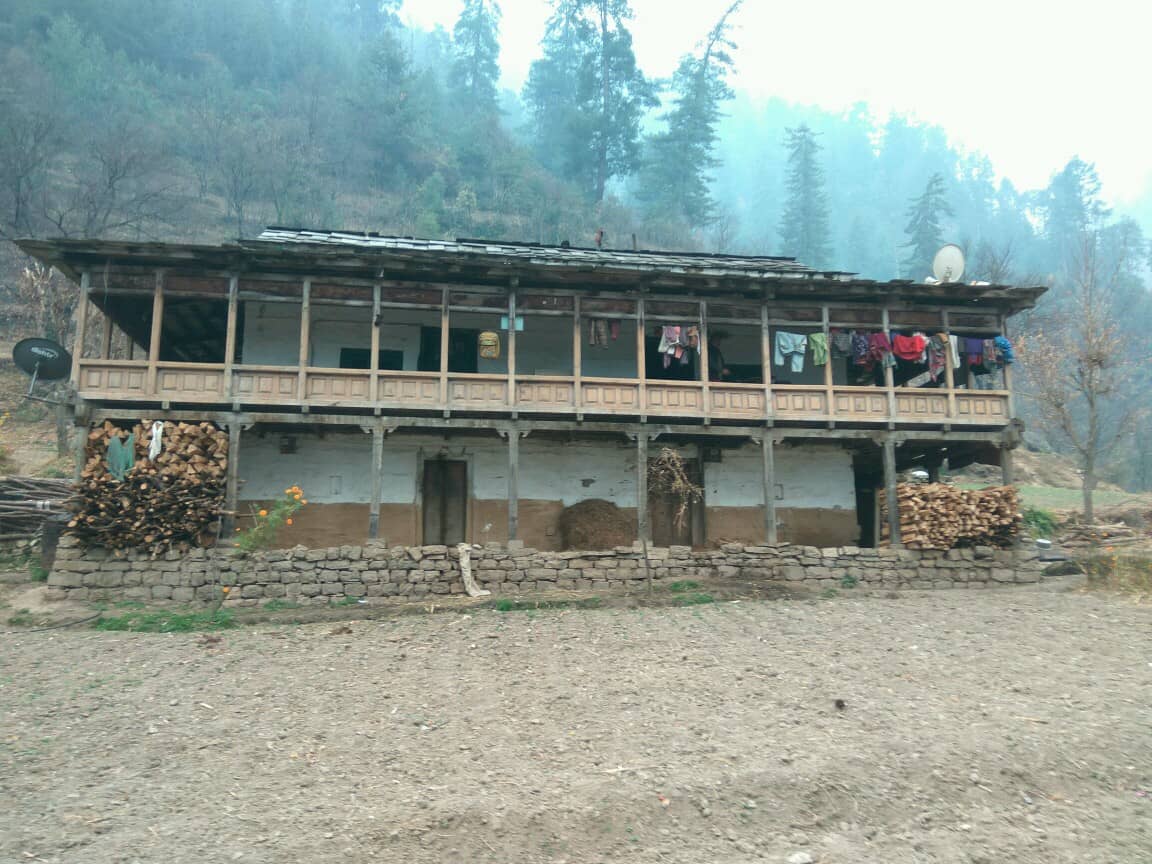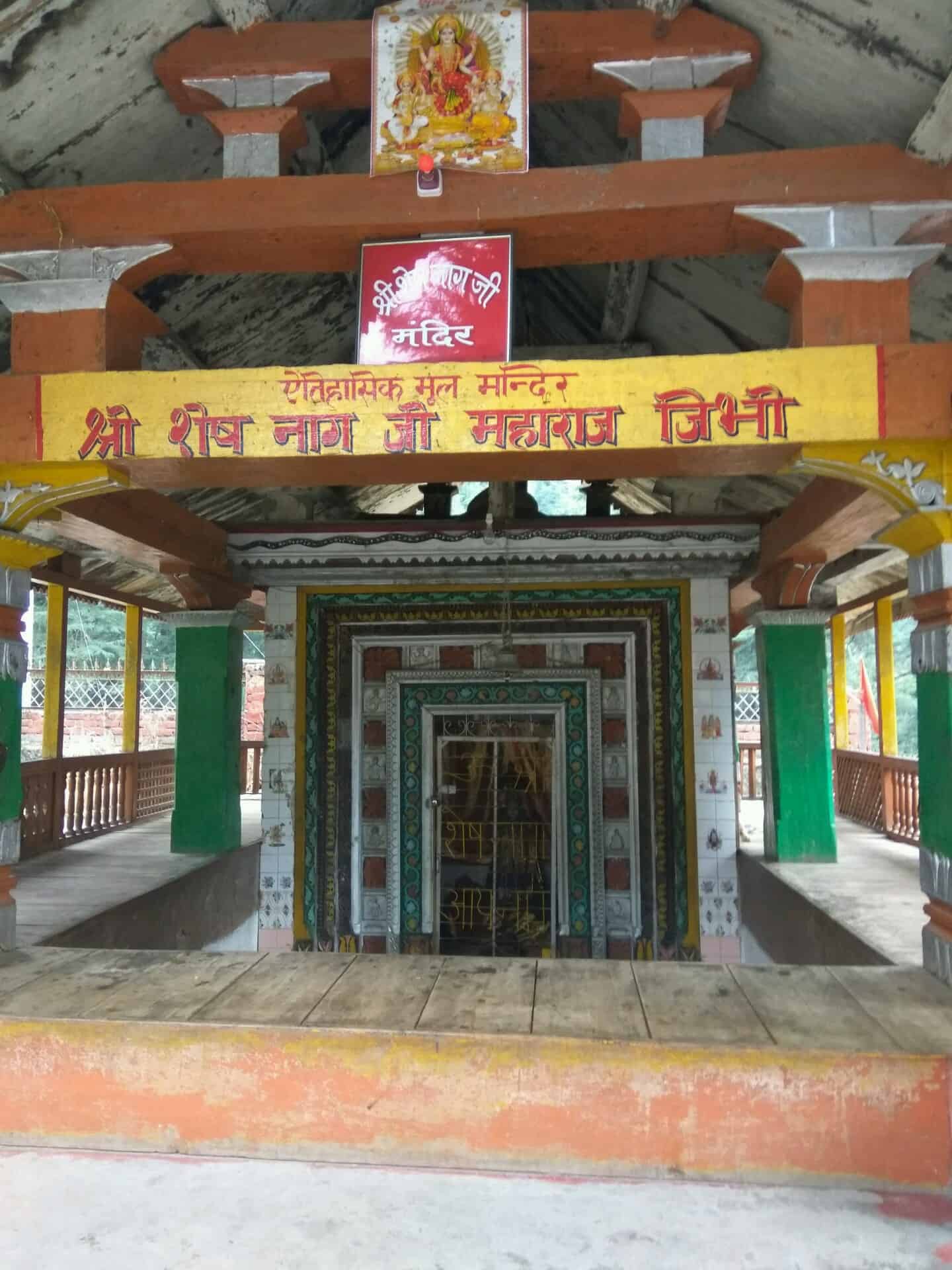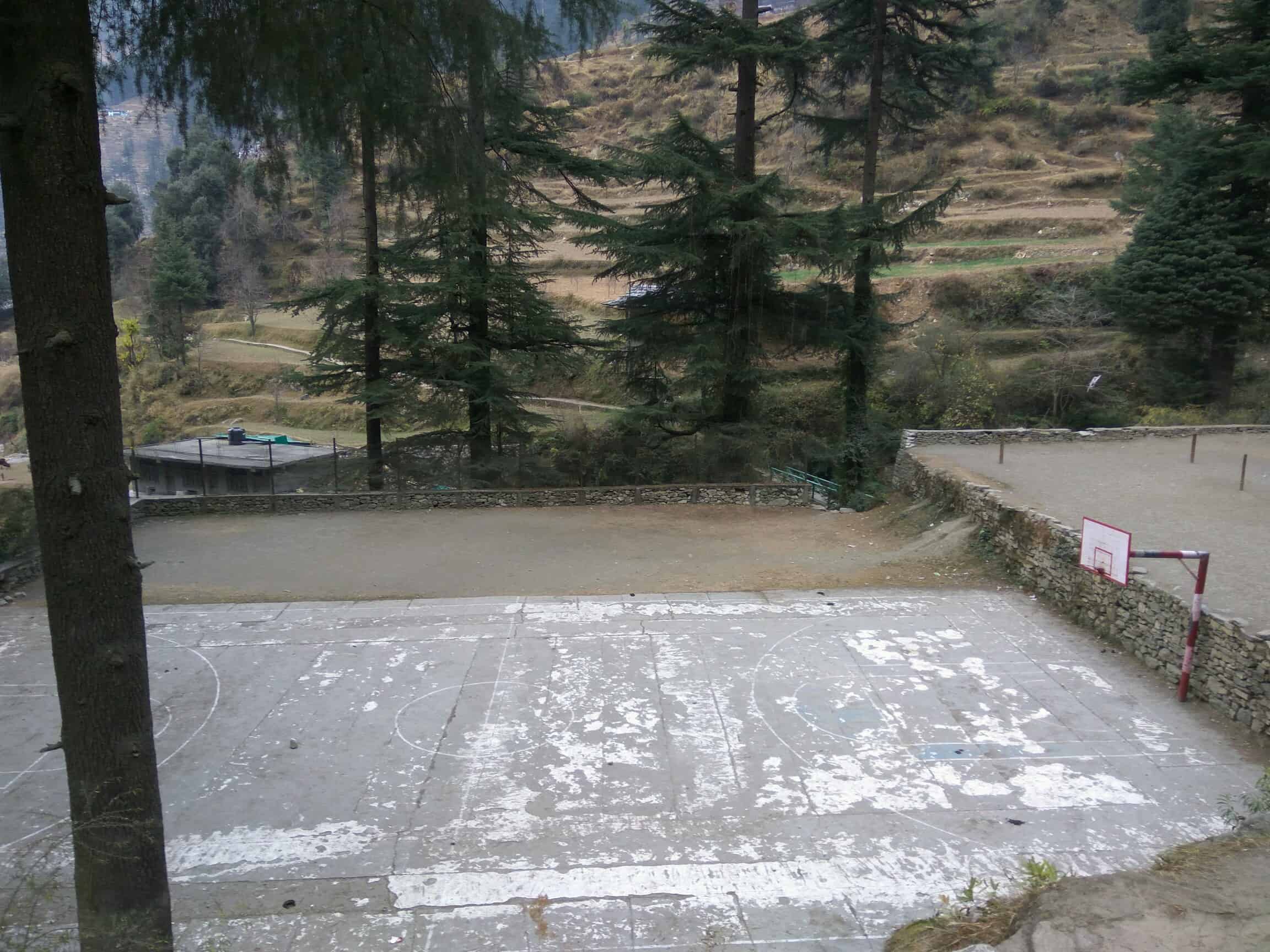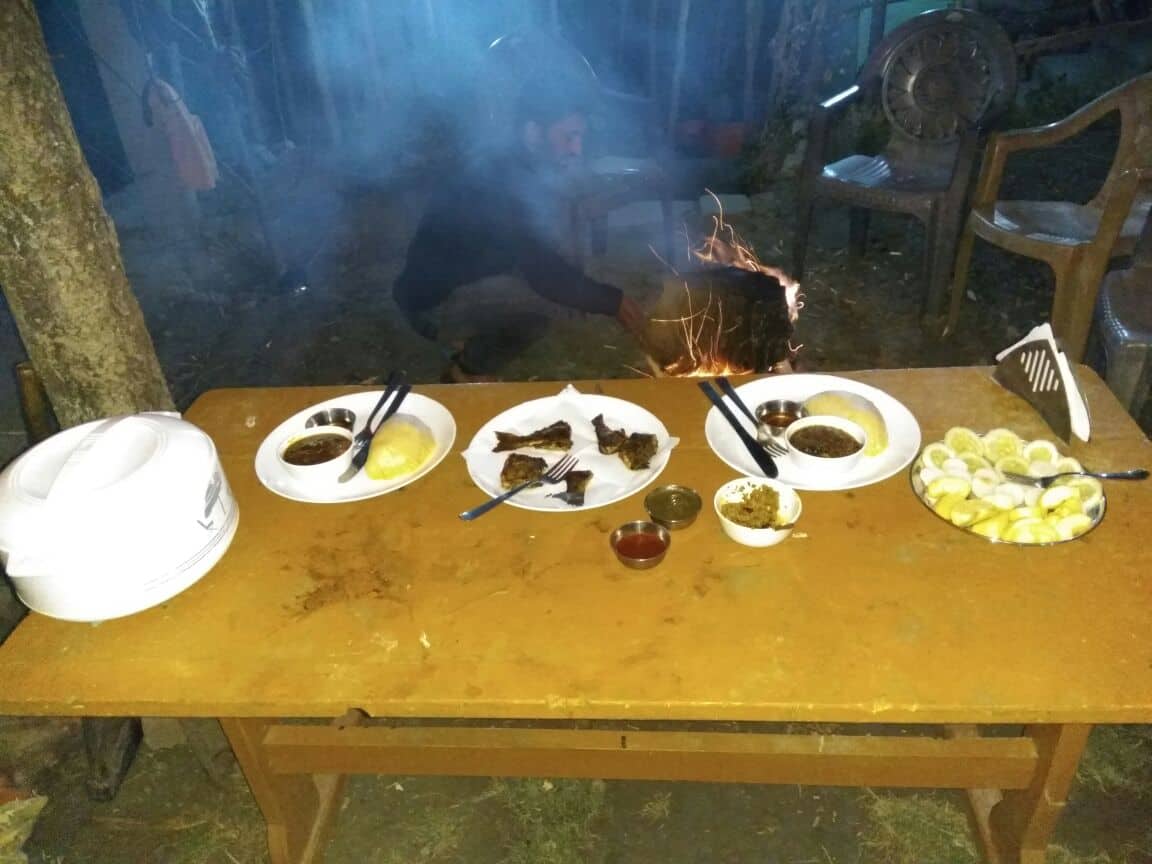Don’t we always want to run away from the madding city crowd and look for seclusion in the hills? This desire drives us, city folks, to settle for nothing less than a place sans any fellow travelers jostling for the same space. One such gem of a destination is Jibhi, a pastoral hamlet situated in Banjar Valley of Himachal Pradesh.

Serenity descends on you when you are at Jibhi because all you can hear is the sound of the gurgling river down your window and bird songs. And all you have got to do is cherish the lush green mountains loaded with pines and cedars. Or walk away on any of the numerous beautiful nature trails which are present around this offbeat place in Himachal in almost every direction.
Let's quickly dive into the details:
Jibhi Travel Guide
Jibhi is a scenic, unpretentious and old Himalayan village settled on the banks of the gurgling Tirthan a river which is a tributary of Beas river. The architecture of the place speaks for itself. Constructed in an ancient Himalayan way, most of the houses at Jibhi are build of stone and wood. Apple orchards and Galgal trees adorn the backyard of every house in this Himalayan village.
Jibhi has become fairly popular among Indian travelers in recent years. However, tourists from other countries discovered this treasure more than two decades ago. During that time, there were hardly any guest houses, hotels, or infrastructure to support tourism here. The village is still not too commercialized and only accommodation options you would find are Jibhi homestays run by locals.



Things to Do in Jibhi Village
Jibhi is one of the nearest villages to the famed Jalori pass, Sirlosar lake, Chehni Fort and the Great Himalayan National Park (GHNP). In addition to exploring all of these places, you can also indulge in angling in the Tirthan river. Or you enjoy the beauty of the village and the hospitality of residents. You can either make a dedicated trip to Jibhi or club your trip to Tirthan Valley with Jibhi.
The ambiance of Jibhi relaxes you, and the most intuitive thing that you would want to do there is nothing! You would want to sit at the banks of the river, read a book, soak in the peace around you and relish the views. But the wanderer in me couldn’t resist the temptation of walking through the forest. I set off with our host Hansraj, a professional mountaineer on nearby trails.
Hiking in and around Jibhi can be categorized as easy to moderate. There are many defined tracks carved by earlier travelers but some of the trails are still virgin.

Chehni Kothi and Shringa Rishi Temple
Chehni village is 7 km away from Jibhi and the major part of the stretch is driveable, the road ends almost 1.5 km from the Chehni tower. We chose to walk the entire trail which passes through thick forest cover of cedars and pines, dotted with apple orchards.
The trek is panoramic and enjoyable by all age groups. En route, you would pass Shringa Rishi temple, which lies at Bagi village, below Chehni. This temple is again built in a similar architecture like that of the Chehni fort but renovated recently and looks quite livid. Shringa Rishi is the presiding deity of Banjar valley.
Trip Suggestion: You may like to club your trip to Jibhi with the Prashar Lake trip.
Chehni Kothi is a watch-tower or garrison for neighboring Chehni village, which has been built in ancient Himalayan style architecture. The tall structure has been resilient to the environmental factors for more than 300 years and lost only the upper two stories in the earthquake of 1905. It is a part of the Chehni fort where you can see the remnants around the tower.

Sheshnag Temple
A short trail of within Jibhi takes you to the Sheshnag temple, which is situated in the middle of a picturesque meadow. Sheshnaag is supposedly another presiding deity of Banjar, besides Shringa Rishi. Both of them enjoy their respective devotee following.
Hansraj claimed the temple to be more than 500 years old. The wooden architecture seemed ancient, but the actual age of the temple is still undefined. Go there to enjoy the trail and green meadows. Spending some time at the place is sure to calm your senses.


Jibhi Waterfall
Our next trail took us to a waterfall that lies in the middle of the forest. You can choose to drive, but the vehicle will have to park almost a kilometer away and then you would have to walk into the forest to reach the fall.


It is one of those rare places which has been gracefully beautified by the man without spoiling its natural aura. There are wooden bridges, streams, and a cemented pool around the fall. But none of this interferes with the magic of this place. It is as serene as it should be, with dense forest all around.
It is a good spot to spend some time with friends and chill in the middle of nowhere. You would hardly find any fellow travelers here; we had the whole place to ourselves for almost four hours. Splashing in the pool and later a little bonfire arranged impromptu by our host near the fall turned it into an enjoyable experience.
Jalori Pass
Jalori is the nearest mountain pass from Delhi, located in Kullu valley at an elevation of 10,500 ft. From Jibhi till Shoja village the roads are in decent shape by the valley’s standards but after Shoja the climb gets very steep. It is not recommended to drive on this road unless you have some good experience in driving in the mountains.
The pass closes in peak winters, depending on snow conditions. If you are going to visit the pass in winters, do check the road conditions first.
Trip Suggestion: You may like to club your trip to Jibhi with the Barot Village trip.
The drive from Jibhi to Jalori is spectacular.
Near the Jalori top, there is a Jalori Mata temple and a few small restaurants


Trout Fishing
The pristine waters of Tirthan stream flowing down the valley are too tempting to stay away. If you happen to visit Jibhi anytime except monsoon season, do try your hand at angling. The waters here are famous for rainbow trout and brown trout.
Rainbow trouts are in abundance, but you still need a fair amount of patience and a good angler with you to land at a catch. You would also need a license for fly-fishing, which you can obtain at INR 100 per day from local authorities. Most of the homestay owners arrange for the fishing license and equipment for their guests. Acquiring the basics will not be a problem here.
The entire Tirthan river and its tributaries are government curated waters for angling. To develop this into a fishing stream, the Himachal government has taken some special measures, which include keeping dams and hydropower projects away from the stream. The stream is also supplemented each year by fresh broods of trout to preserve biodiversity.
Location
Yet the unspoiled settlement of Jibhi is located in Banjar valley of Himachal Pradesh. It is located on the Manali to Shimla route that goes through Jalori Pass, 8 km away from main Banjar Valley (also known as sometimes referred to as Tirthan valley).
Jibhi Weather
Weather in Jibhi remains very pleasant all around the year with the summer temperatures hovering around 24-degree Celsius. Due to the presence of the Tirthan river, the cool breeze is almost always present, and you will always feel the music in the air, and lots of greenery around you add to that nice feeling.
When visiting Jibhi in winters, the minimum temperature may fall below the freezing point and hence, you can expect snowfall during winter. The weather in Jibhi and around gets dry in peak winter months. Snowfall is expected in January – February months and you can always go for snow at Jalori Pass.
Hence, it is one of the places to witness snowfall near Delhi in Himachal.
Best time to visit Jibhi
Although Jibhi is a very nice, quiet, relaxed, and pleasant place almost throughout the year. However, during the spring season from March to May, it’s just amazingly refreshing and beautiful. With apple orchards blooming in the valley, the best time to visit Jibhi is the spring season.
What if I miss visiting Jibhi in March – April?
Well, I can say from my experience and many others that Jibhi will not disappoint you a bit from March to November months. You can This time window is considered a good time to visit if somehow you don’t get a chance to visit Jibhi in the spring season.
Trout fishing season is from March to October but for that, you also need to take a daily license at Rs. 100 per person per fishing rod which is non-transferable.
How to travel Delhi to Jibhi by Road?
If you are making a road trip to Jibhi from Delhi then the best way to reach Jibhi is to either drive up-to-the place or board an overnight bus for Manali. Both HRTC and HPTDC luxury Volvos and state transport buses ply daily from Delhi to Manali. You can board these buses in the evening and can get down at Bhuntar or Aut early the next morning.
Jibhi hotels or Guesthouses or homestays easily provide transport or pick up from Aut. If you are going by bus, de-board at Aut and cover the rest of the journey by taxi, it costs 1000 – 1200 rs.
If you are driving by yourself, it is almost 500 km / 12 hrs drive from Delhi. The roads are decent and the route is scenic especially.
If you are interested you can also travel to Jibhi from Shimla – Narkanda side and drive up the adventurous Jalori Pass to get down towards Shoja – Tirthan Valley.
If you are coming from any other city, follow the routes mentioned below:
By Air
The nearest airport from Jibhi is Bhuntar, approximately 50 km away or a couple of hrs drive by road. You will have to take a cab/bus to get to Jibhi from Bhuntar. The airport has limited connectivity and might face interruptions in operations, given weather fluctuations in the Kullu region.
By Train
The nearest railway station with good connectivity is Shimla, which is over 160 km or 5-6 hrs of a drive away. Shimla doesn’t connect with many cities directly via train.
Chandigarh to Jibhi
Chandigarh is the closest major railway station, which is 265 km away. Private buses are available from Chandigarh which will take you till Aut on Chandigarh to Manali route but in a much longer time as compared to a private cab from Chandigarh to Jibhi.
No direct trains run to Mandi from Delhi or Shimla. You can also travel to Joginder Nagar train station as well which is about 120 km from Jibhi.
Once you reach Aut, you will have the option of either waiting for a connecting bus to Jibhi running between Kullu to Shimla (there aren’t frequent buses on this route) or hire a private taxi.
Stay Options at Jibhi
This impromptu visit to Jibhi turned into absolute delight when we landed at Jibhi Inn Cottage, a humble two-bedroom homestay right in the middle of the village. It is located on the bank of the river and has a beautiful backyard full of apple trees.
If you plan to stay at Tirthan Valley, then there is nothing like staying with Raju Bharti Guest House
From the terrace and balcony of the house, one can see the entire valley stretched leisurely. Besides the tranquil surroundings and a splendid view, Jibhi Inn Cottage offers a very comfortable stay along with basic amenities. The rooms are clean, decently furnished, with hot water geyser, a room heater, and very warm beddings – befitting the climate. Our host, Hansraj, and his family were extremely hospitable and took care of everything that we needed.
Jibhi Homestay
There is another homestay in Jibhi as well which you can stay wit. Most of them provide you with basic facilities and food but warm hospitality always.

Food Delight Nearby
Almost all of the accommodations in Jibhi are run by local families. If you are a food enthusiast, request your hosts to make some of the regional dishes. My fondest memory of Jibhi is staying with our hosts and eating local delicacies with their families. Sitting by the riverside in sub-zero temperature we enjoyed some authentic Himachali dishes prepared by the lady of the house.
On our request, she readily agreed to cook Siddu, which is a stuffed bread, native to Himachal and popular in the northern and eastern Himachal region. It tastes best when served with homemade ghee or clarified butter, dal or lentil soup and green chutney.

The next dish on the platter was the Jungli Chicken or Forest Fowl. Travelers who do not like eating this variety of chicken should consume it in small quantities at first because it gets a little difficult to digest. Thanks to our host, who warned us about this. Going to this part of Himachal and not eating Himalayan Trout is sacrilege.
A fresh catch was made during the day by an accomplice of our host, which was later cooked to perfection in Himachali style for dinner. Calling it delicious will be an understatement. You have got to experience it to know how heavenly it was.

Ecotourism at Jibhi
Jibhi’s residents have been promoting ecotourism since the village has been on the map of explorers. Though many homestays have mushroomed in the village, most of the residents are taking special measures to keep their operations green. Jibhi’s travel ecosystem is still nascent, the residents’ hope for a better economy which largely depends on tourism.
Despite this, Jibhi’s people and their associates in tourism are extremely vigilant of the practices they follow. GHNP was declared the World Heritage Site in 2014, and since then, Indian tourists have started trickling to Jibhi but not in great numbers. This less number of tourists is a good thing for the ecology, but Jibhi’s economy demands more.
The only way to balance both is sustainable tourism, ecotourism or adoption of green practices, causing minimal harm to this ecologically sensitive area. I request you to follow these tips on responsible tourism while visiting places in the Himalayas like Jibhi.

Some Other Tips
Being inside the periphery of the Great Himalayan National Park (GHNP), Jibhi falls under an eco-sensitive zone. GHNP has rich wildlife and an abundant variety of flora. You are likely to have an encounter with a Himalayan black bear (known as Reechh in Hindi) here especially during winter months.
Hence, if you are traveling to Jibhi in winters, then it is better to avoid camping or else take wildlife precaution when camping in the wild. Also, be careful when hiking as well.
They use orchards, agricultural fields, and human habitation to move between forest patches. Because of this reason, it is advisable to not go on unknown treks without a local guide. Winter months in Jibhi get really chilly, carry ample woolens with you.
Do NOT forget to carry a water bottle on your trek in the Himalayas.
You should check out the list of things to carry on a Himachal trip. If you want to see Jibhi at its best, go there in spring or summer. You will witness lush green mountains, apple orchards and a variety of Himalayan flowers.
Some FAQs
Does it snow in Jibhi in winters?
Yes, at times, it does snow in Jibhi in the winter months of January and February. Apart from that when you travel a little up towards Shoja and Jalori Pass, you will get plenty of snow as well as snowfall up there.
How far is Jibhi from Manali?
The distance from Manali to Jibhi is 100 km and it will take about 3-3.5 hrs to reach Jibhi from Manali.
Can I travel from Jibhi to Kasol?
Yes, you can travel from Jibhi to Kasol. The distance from Jibhi to Kasol is 82 km and it will take about 3 hrs to reach Kasol from Jibhi. Hence, you can also make a day trip from Jibhi to Kasol.
Conclusion
Jibhi is a place to completely unwind and indulge in relaxing activities like book reading, fishing, and nature walk. For the restless souls, there are more arduous treks like Jalori pass and a whole lot of Great Himalayan National Park to explore.
PS: With this comprehensive guide, I am sure you do not need to buy any Jibhi package and with the money, you will save, you can spread some smiles in the Himalayas.
Have a travel question?? You can subscribe to my YouTube channel and leave a comment to ask your travel questions about traveling to the Himalayas.
Do you still have any questions or suggestions or need any help in planning your trip to Jibhi? If yes, please feel free to post them in the comments section of this article below to discuss your upcoming travel plans for Jibhi or Tirthan Valley.
If you like the article, please feel free to share it with any of your family or friends who are planning a trip to Jibhi or Tirthan Valley. Happy traveling to you!!!
Do follow @soulful_worldview on Instagram for updates on her next family adventure.






